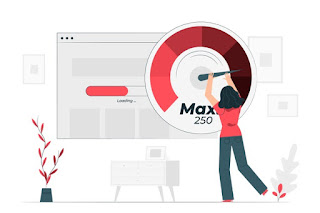The Components of An Efficient Blog Post
In the previous article, we discussed the advantages of blogging for online marketing purposes.
Are you curious enough to learn how to create blog articles that helps you make the best use of blogging for digital marketing and organic SEO traffic?
Let’s check out the components of an efficient blog post.
1. A compelling headline
What is the first thing you see in an article? The headline. Make it as exciting and attractive as possible. It's the first thing that people see. Use a heading to grab attention of your visitors. Consider what you’d wish to see if you were trying to find an answer to your problem. Write a catchy headline that encourages people to click the link and reach your webpage.
2. Meaningful subheadings
Don't make a large chunk of text as your article. break it down into smaller and more manageable chunks. Add great sub-headings that add meaning to the text that follows. Subheading should guide your reader to the subsequent step.
3. Well-researched content
Don't write fluff. People want real value when they come to your website. Do not disappoint them with poor quality content. The bosy of your article should be great and it should provide the answers people are looking for. Do your research, support your content with authoritative data and other resources to make it credible.
4. Robust call to action
When you have a visitor reading your article, make the best use of it. Provide them a clear call to action if you have a product or service they might be interested in. You could also use your visitors to build your newsletter.
Turn your one-time visitor into a valuable subscriber or buyer.
Without a clear call to action, your user knows what to do after they are done reading the article. You could use this opportunity to build your email list, get them to join any membership program, have to signup for free samples, or whatever you want them to do.
5. Visual appeal
Add relevant graphics and images to your blog posts. Turn figures into an attractive infographic. Create your blog posts with a visual sense too.
Why think about visual aspect of your blog post?
• Images and visuals help easy assimilation of information
• Posts with relevant images perform better in search engines.
• Blogs with images receive higher engagement
6. Good meta title & description
Search engines don't rely much on meta data. So why bother about adding a good meta description (and title)?
If you want, you can have an entirely different webpage title for search engines. Instead of using your article heading, you can try something else to show in search snippets.
Adding meta descriptions is important even when it no longer plays much roles in ranking. Meta descriptions are still useful as they appear with search snippets in search results. A great description can encourage readers to click on your link and visit your website.
Let's conclude with the statement that blogging for marketing has numerous advantages. Never underestimate the importance of blogs to extend engagement. Do your keyword research, write engaging articles and sell on social media. It'll be worthwhile for your online marketing strategy as well as SEO.
(Credit: Design by Freepik.com)


Comments
Post a Comment